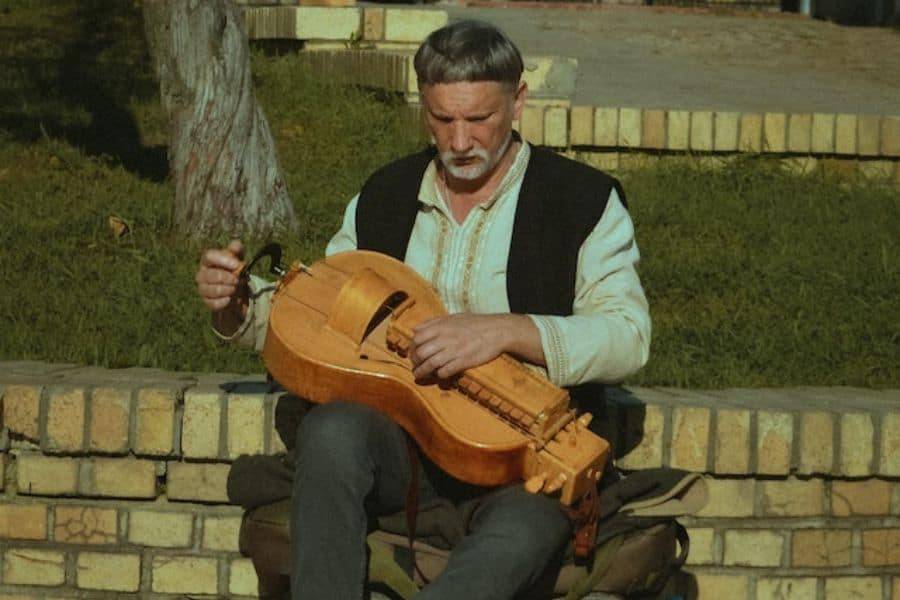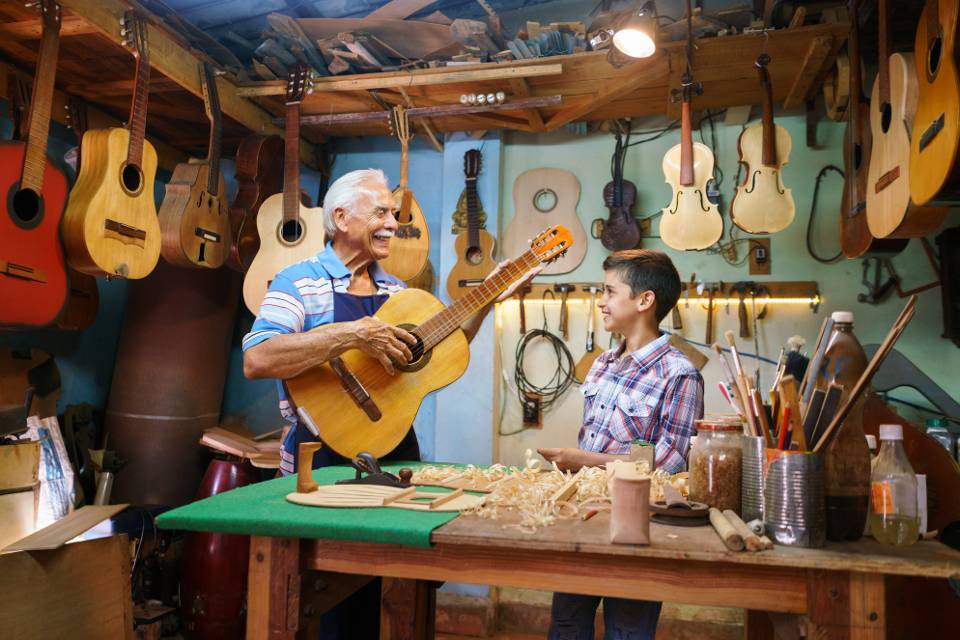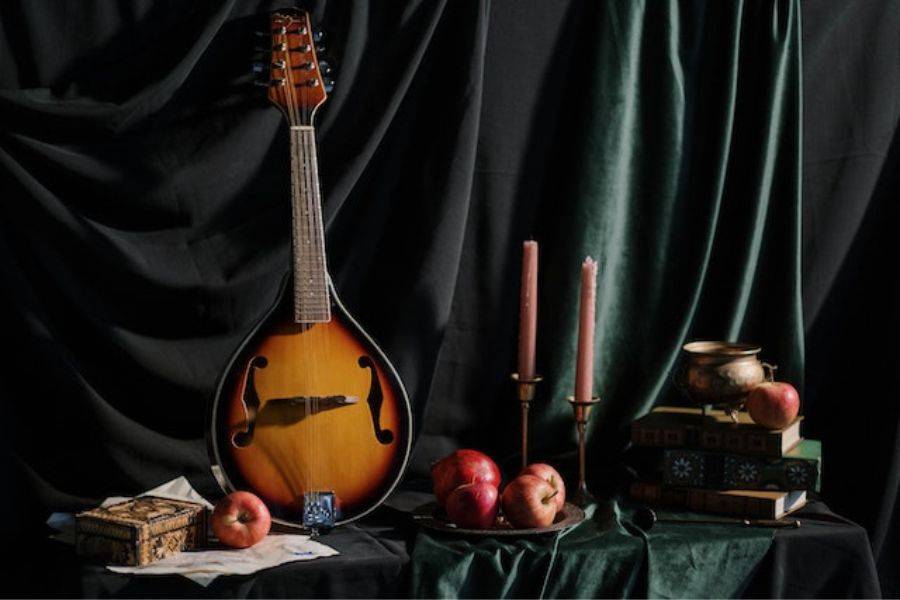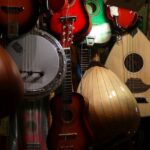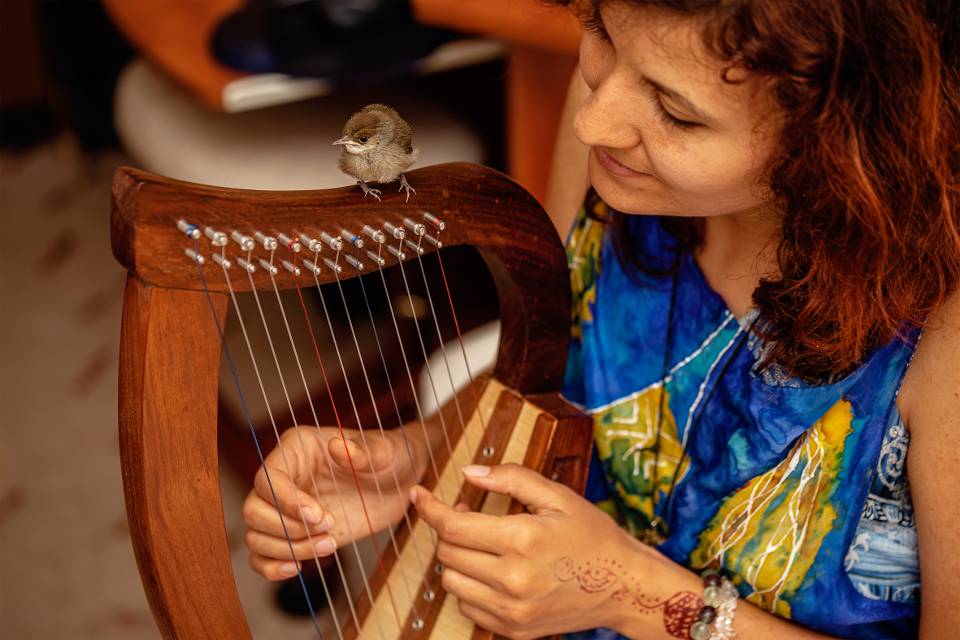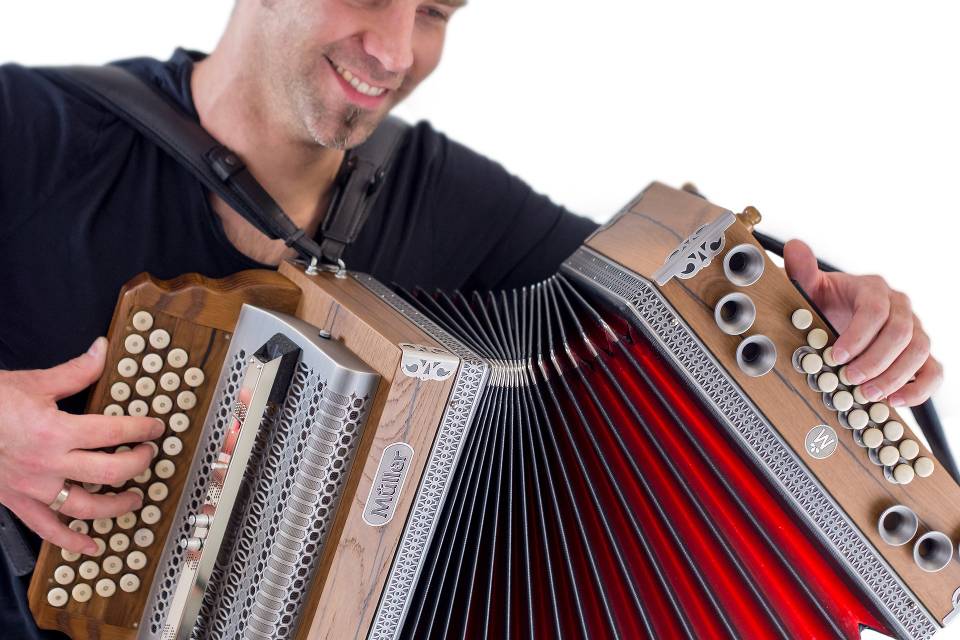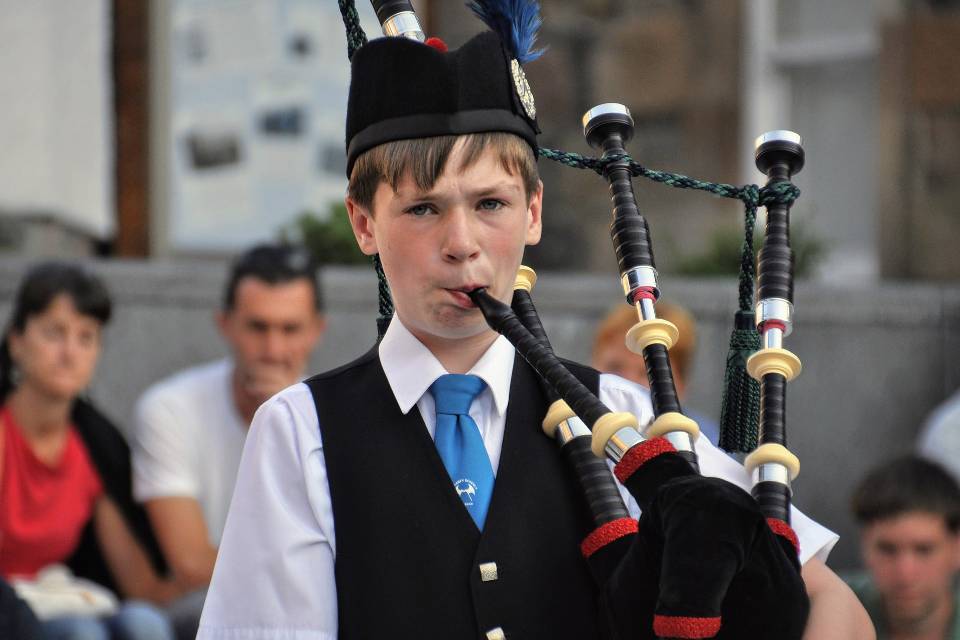The string instruments are one of the largest family of instruments and are usually held in different forms.![]()
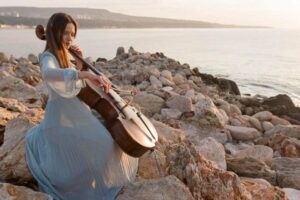
Some string instruments are commonly held between the knees. The body of the instrument is supported by the knees while the musician is seated.
Here is a list of some knee-held string instruments. These instruments are from a diverse range of musical traditions across various cultures and historical periods.
Contents
What Are String Instruments Held Between the Knees?
Cello
Perhaps the most well-known knee-held string instrument is the cello. The cello is played in an upright position with the player seated.
The instrument’s body rests on the floor while the neck and upper part are braced against the musician’s chest and shoulder.
The lower bout of the cello, where the C-string is located, rests on a spike or an endpin.
By positioning the cello between the knees, the player can have better control and stability while playing the instrument.
The Double Bass
It is also known as the upright bass or contrabass. The double bass is the largest and lowest-pitched instrument in the string family.
Normally, it is typically played in a standing position with a strap around the player’s shoulder.
However, it can also be played in a seated position. Players typically rest the body of the bass against the player’s body and support the neck between the knees.
Both the cello and the double bass are versatile instruments. They are commonly used in classical music, jazz, and various other genres.
In addition to these classical string instruments, there are modern variations that can be played in a knee-held position.
For example, there are electric cellos and electric upright basses that can be played similarly.
Electric Cello
An electric variation of the cello can be played in the knee-held position.
Electric cellos often have a more compact body and can be played with headphones or amplified for performance purposes.
Electric Bass
This is an electric version of the double bass (also known as the upright bass or contrabass).
It typically has a slightly smaller body and can be played in a knee-held position, similar to the cello.
The Harp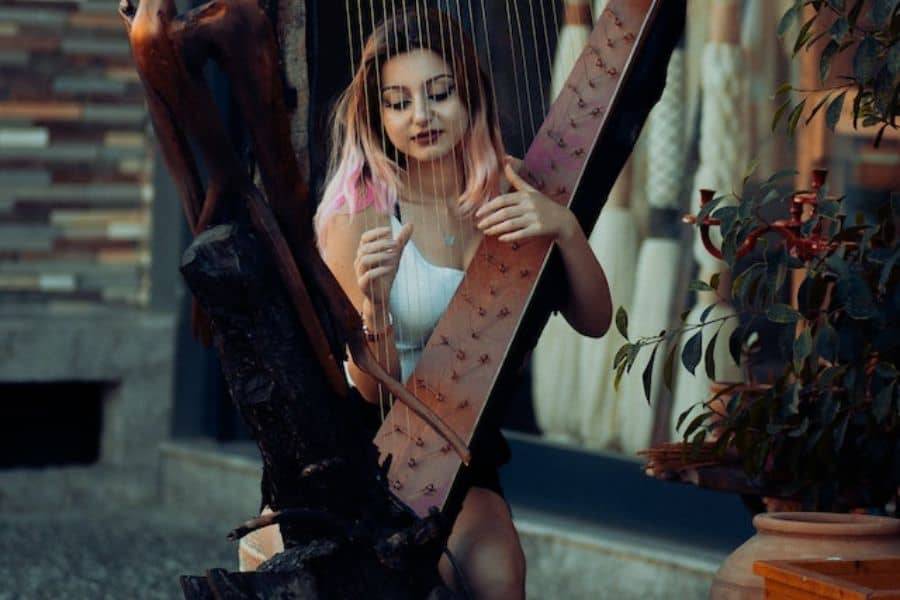
The harp is a popularly known large, multi-stringed instrument with a triangular or semicircular frame. It is played by plucking the strings with the fingers of both hands.![]()
![]()
![]()
While the instrument rests on the floor or a stand, it sits between the knees of the harpist.
Harpists do not hold the instrument between their knees like with instruments like the cello or double bass.
Viola Da Gamba
The viola da gamba is a fretted string instrument that was popular during the Renaissance and Baroque periods. It has a similar playing position to the cello.
The musician is seated and the instrument’s body rests on the ground. The neck of the viola is braced against the shoulder, and the lower bout is supported by the knees.
Bass Viol
The Bass viol is a large member of the Viola da Gamba family. It has a similar playing position to the viola da gamba.
The musician is seated and the instrument’s body rests on the ground. The neck is braced against the shoulder, and the lower bout is supported by the knees.
Viola Pomposa
This is a lesser-known string instrument. It is similar in size and shape to a violin or viola but with additional sympathetic strings.
It can be held between the knees or supported on a leg while being played.
Some less popular string instruments are also held between the knees and used in cultures around the world.
These may not be as well-known as the cello or viola. However, they provide fascinating opportunities for exploration and creativity in string instrument performance.
Hardanger Fiddle
This traditional Norwegian instrument is similar in appearance to a violin and it has been compared.
However, the Hardanger fiddle has additional sympathetic strings below the main playing strings.
It is played with a bow and can be held between the knees while seated.
Nyckelharpa
The nyckelharpa is a Swedish keyed fiddle. It has a series of wooden keys that depress the strings to change pitch.
It is played with a bow and can be held between the knees. The body rests on the player’s legs.
Hurdy-Gurdy
The hurdy-gurdy is a unique string instrument with a keyboard. It also has a rotating wheel that bows the strings, and various drone strings.
It can be held between the knees while playing, with the keys and wheel accessible to the player’s hands.
Baryton
The baryton is a rare instrument that was popular during the 17th and 18th centuries. It features sympathetic strings that vibrate in response to the main strings being played.
Similar to the viola da gamba, the baryton can be held between the knees. Its body rests on the legs of the player.
Dihu
The dihu is also known as the Chinese two-stringed fiddle. As a stringed instrument, it is played by holding it between the knees.
It is a traditional Chinese bowed string instrument with a small resonating chamber and two strings. The torso of the dihu is typically made of bamboo or wood.
To play the dihu, the player holds the instrument vertically between their knees. The sound box resting on their thighs.
The bow is then drawn across the strings to produce sound. The pitch of the dihu can be adjusted by pressing the strings against the neck with the fingertips.
The dihu is known for its distinctive sound. It is often featured in ensembles, accompanying other traditional instruments.
Octobass
The octobass is an extremely large and rare instrument that belongs to the double bass family.
It is so massive that the player had to sit on a stool and support the instrument between their knees.
The octobass produces incredibly low tones and is primarily used in orchestras for special effects.
Viola D’amore
The viola d’amore is a historical string instrument that has sympathetic strings that resonate sympathetically with the played strings.
It is held between the knees, similar to a cello, and played with a bow. The viola d’amore has a warm and resonant sound and is commonly used in Baroque music.
Lirone
The lirone is a bowed string instrument with numerous strings that are played simultaneously. It is held between the knees or sometimes supported on the lap.
The lirone was popular in the Renaissance and Baroque periods. It was often used to accompany vocal music.
Doshpuluur
The doshpuluur is a traditional three-stringed lute-like instrument from Central Asia, particularly popular among the Tuvan people. It is sometimes held between the knees.
The strings are plucked or strummed while the player uses their other hand to dampen the pitch of the strings.
The Great Thing about Knee-Held String Instruments
Each instrument provides its own unique timbre and playing experience. Overall, knee-held string instruments offer a unique playing experience.
They often produce rich, resonant sounds due to their larger size and design. Granted, the one common feature they share is being held between the knees for support while playing.
This playing position allows for the use of bowing techniques and finger placement on the strings.
It also allows various articulations that contribute to the expressive capabilities of the instrument.

